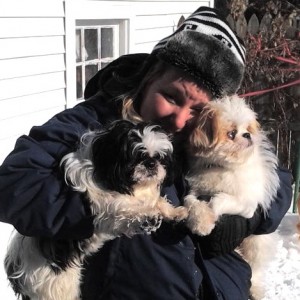Dog Ma
“If only my dog could speak…
They can, you’re just not listening!”
Humans are verbal. Dogs speak through body language, and say exactly what they mean. We humans tend to listen with our ears, rather than our eyes, and miss much of what dogs are saying. We are actually very forward and can be a bit overbearing with our dogs in terms of our attention. The way we use our bodies to speak is very different than the way our dogs would use their bodies. Your dog, believes your interactions to be a bit impolite at times. Dogs for example, meet each other in an arc. It’s rude, in their world, to walk a straight line toward them and make direct eye contact. In fact, polite dogs do everything they can to avoid the face to face and direct eye contact greeting that we interpret as polite and appropriate. Dogs turn their head away, they might sniff the ground upon approach, this is good dog communication. So, It’s easier to see then, why our intentions are not always clear with our dogs. Learning the very basics of canine body language will help us become good dog listeners and better communicators too.
When interacting with our dogs, keep an eye on; (ears, tails, eyes, lips, and overall posture). Here are a few emotional states that dogs will display:
Standing tall, tail up, ears pricked up or relaxed, direct look.
Dominant dog
Standing over another dog, standing tall, resting of the dominant dog’s chin or paw over another dog’s shoulders. Staring, sometimes mounting (“humping”) is a way of establishing control.
Submissive dog
Lowered head and body, allowing other dogs to stand over them. Licking at other dogs’ lips and corners of the mouth. Looking away from the other dog, rolling on back and craning head away from other dog, tucking their tail.
Playful dog
The dog’s tail and butt is in the air, with the front legs are lowered. The dog’s ears are up and forward, his mouth is open in a “grin”, and his eyes are relaxed. The classic play bow is the dog’s invitation to play.
Stress or fear in a dog
Shaking, whining, “submissive” urination, ears back, rapid panting, tail down or tail tucked under, body lowered, licking of lips or nose, looking away or turning head away & fear barking.
Signs of aggression in a dog
This is pretty obvious; lips drawn back in a snarl, growls with teeth. Some other things to look for, are lowered head; ears “pinned” back close to the head; “hackles” up, tail straight out, and intense stares. φ
Bark at you later!




